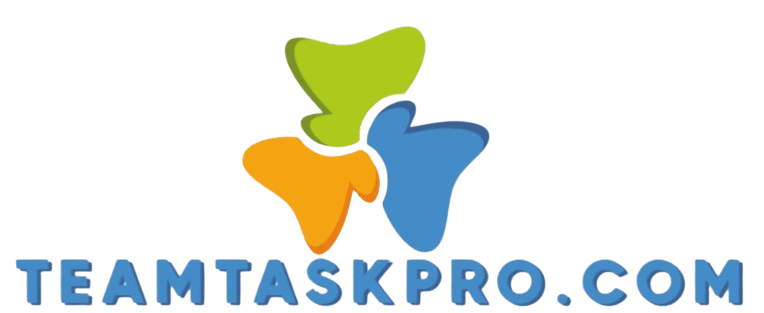what is project management?
Project management stands as a vital discipline, encompassing careful planning, execution, and oversight of projects to achieve specific goals within defined constraints.
This article delves into the key components of effective project management, guiding you through defining project scope and objectives, planning and scheduling, resource management, and risk management.
Discover how mastering these skills can supercharge your efficiency, improve communication, and enhance collaboration.
You will also explore popular methodologies like Agile, which focuses on flexibility and teamwork, and Waterfall, which follows a step-by-step process, that can elevate your project management practices.
Whether you re a seasoned professional or just stepping into the field, grasping these elements will empower you to lead projects toward remarkable success.
Contents
Key Takeaways:

Project management is the process of planning, organizing, and executing a project to achieve specific goals and objectives within a defined scope. The key components of project management include defining scope and objectives, planning and scheduling, resource management, and risk management. Effective project management leads to increased efficiency and productivity, improved communication and collaboration, and the use of common methodologies such as Agile, Waterfall, and Scrum.
Defining Project Management
Project management is your roadmap for navigating the complexities of planning, executing, and overseeing projects to reach specific goals while making the most of your company s resources.
It includes methods like Waterfall and Agile, ensuring success across diverse industries such as construction engineering and IT. As a project manager, you play an important role in this journey, orchestrating every stage from initiation to execution and closing, all while keeping a keen eye on budget and timelines.
In this ever-evolving landscape, selecting the right methodology is paramount as it significantly impacts your resource allocation and milestone achievements.
For example, Agile methodologies place a premium on flexibility and team collaboration, allowing for iterative progress and quick adaptations especially advantageous in the fast-paced world of software development. On the other hand, the Waterfall model takes a linear approach, perfectly suited for projects with clearly defined requirements, such as construction.
Lean techniques further amplify project efficiency by cutting waste and maximizing value, showcasing the important role you play as a project manager in steering these phases toward successful outcomes, while ensuring everything aligns seamlessly with business objectives.
Key Components of Project Management
Grasping the essential components of project management is crucial for achieving successful project execution and delivery. This includes a thorough understanding of project scope, clear objectives, meticulous planning, effective resource management, and comprehensive risk management.
By mastering these elements, you’ll be well-equipped to navigate the complexities of any project with confidence and finesse.
Project Scope and Objectives
Defining your project scope and objectives is crucial for clarifying requirements and ensuring that all stakeholders share aligned expectations throughout the project lifecycle. This clarity lays a solid foundation for strategic planning and significantly minimizes the risks of scope creep, which can derail even the most well-intentioned projects.
For example, when your software development team articulates specific deliverables such as a user-friendly interface and robust security protocols they establish benchmarks that guide progress and measure success. By recognizing constraints like budget limitations or resource availability, you can make informed decisions that align with your overall goals.
Therefore, establishing clear scope and objectives is not merely a procedural formality; it s a cornerstone of project management that directly influences outcomes.
Start implementing these strategies in your next project!
Project Planning and Scheduling
Effective project planning and scheduling are essential for outlining your project phases and ensuring you deliver milestones on time. You ll find Gantt charts and other project management tools invaluable for visualizing your workflow.
These methodologies assist in mapping out tasks and play a crucial role in resource allocation, key to optimizing your team s productivity. Create clear visuals with Gantt charts to enable stakeholders to track progress easily, spot bottlenecks, and adjust timelines as necessary.
Milestone tracking offers a structured framework to monitor critical points in your project lifecycle. This fosters improved communication and collaboration among team members. Integrating these tools enhances your overall project management success, aligning strategic goals with actionable plans and steering you toward desired outcomes.
Resource Management

Resource management is about effectively allocating and utilizing your company s resources. Ensure that each team member fulfills their specific roles within the project to achieve your goals efficiently.
Effective resource management helps you meet deadlines and plays a pivotal role in your project’s overall success. By strategically aligning resources with tasks, you minimize waste and maximize productivity, leading to outstanding results.
Implement tactics like diverse skill assessments and balanced workload distribution to elevate team performance and nurture a collaborative atmosphere.
Recognizing various roles within your project team such as project managers, team leads, and specialists is essential. Each member brings unique contributions to resource optimization.
Regularly reviewing resource allocation allows you to make proactive adjustments, ensuring your project stays on track and within budget.
Risk Management
Risk management is an important part of project management. It allows you to pinpoint potential issues and constraints that could jeopardize your project. Utilize tools like risk registers and simulations to mitigate these risks effectively.
Systematically identify risks early in the process to prioritize them by their potential impact and likelihood. This involves a thorough analysis where you apply both qualitative and quantitative assessments to gauge the severity of each risk.
Craft robust mitigation strategies like contingency planning and risk avoidance to tackle unforeseen challenges without derailing progress.
Continuous monitoring throughout the project lifecycle is key. This enables you to make timely adjustments to strategies as conditions evolve and new risks emerge. Staying ahead of the game keeps you ready for any surprises!
Benefits of Effective Project Management
Effective project management opens the door to numerous exciting benefits! These include heightened efficiency and productivity, improved team collaboration, and a greater chance of meeting project objectives while delivering exceptional value to your customers.
Increased Efficiency and Productivity
Boosting your efficiency and productivity through effective project management methodologies leads to smoother execution and better outcomes for all stakeholders involved.
Adopt frameworks like Agile, Lean, and Six Sigma to refine your processes and respond more adeptly to changes.
With Agile methodology, engage in iterative project development to gather feedback and make real-time improvements. This can significantly reduce your time to market.
Lean focuses on eliminating waste in processes, streamlining operations, and enhancing resource allocation. In manufacturing, implementing Lean practices has led to reduced lead times and substantial cost savings.
Similarly, Six Sigma’s data-driven approach enables you to pinpoint inefficiencies, resulting in greater quality control and increased customer satisfaction. Integrating these methodologies boosts productivity and fosters collaboration among all stakeholders.
Improved Communication and Collaboration
Improved communication and collaboration among your project teams are essential for keeping all stakeholders informed and engaged throughout the project lifecycle. This is often made easier with the help of project management software and communication tools.
By leveraging platforms like Slack for real-time messaging and Zoom for face-to-face interactions, you’ll break down silos and boost collaboration immediately! These software tools are critical in making information easily accessible, fostering a culture of transparency.
Integrating project management solutions allows you to streamline task allocation and track progress effortlessly, ensuring that everyone remains aligned on objectives.
Engaging stakeholders through regular updates and feedback loops elevates their involvement and enhances the quality of the project, ultimately driving better outcomes and enriching team synergy.
Common Project Management Methodologies

You ll find that common project management methodologies like Agile, Waterfall, Scrum, Lean, and Six Sigma each present distinct frameworks and tools that cater to diverse project needs and environments.
Agile
The Agile methodology stands out for its iterative process, enabling you and your project team to swiftly adapt to changes while delivering value incrementally. For instance, in software development, Agile practices enable your team to release functional software every few weeks, significantly boosting user satisfaction through continuous improvement.
This method strongly emphasizes collaboration among team members and stakeholders, creating an environment where feedback is not just welcomed but seamlessly integrated into the development cycle.
Agile principles aren’t confined to the tech world; they’ve also found a place in industries like marketing and manufacturing. By prioritizing customer needs and responding swiftly to shifting demands, your team can effectively enhance productivity and meet project goals with ease.
Waterfall
The Waterfall methodology presents a traditional project management approach that is both linear and sequential, requiring you to complete each phase before progressing to the next. This structured nature proves to be incredibly advantageous for projects with clearly defined requirements and scope, such as software development in regulated industries like healthcare or aerospace.
When designing a medical device, the clear delineation of stages requirements, design, implementation, verification, and maintenance ensures compliance with stringent regulatory standards. However, this rigidity can also lead to challenges. Encountering unforeseen complications or shifting requirements can make adaptation cumbersome, often resulting in delays.
Thus, while the Waterfall approach can uphold project integrity and clarity, it’s crucial to weigh these benefits against its limitations in flexibility, particularly in fast-paced environments where requirements frequently evolve.
Scrum
Scrum is an Agile framework that paves the way for project success through iterative cycles called sprints short work periods where the team focuses on completing specific tasks quickly. Clearly defined roles and responsibilities ensure your team remains accountable and focused.
By integrating key components like the roles of Scrum Master and Product Owner, you can navigate the complexities of project management with greater ease. The Scrum Master serves as a facilitator, guiding your team in adhering to Agile principles and overcoming obstacles.
Meanwhile, the Product Owner prioritizes tasks based on customer feedback and business value, ensuring that every decision drives the project forward. Daily stand-up meetings, often referred to as daily Scrums, provide a platform for your team members to sync up, discuss progress, and pinpoint any hurdles.
This not only enhances collaboration but also fosters open lines of communication. Through these structured practices, Scrum cultivates an environment of continuous improvement, ultimately propelling your project toward success.
Frequently Asked Questions
What is project management?

Project management is the process of planning, organizing, and overseeing a project, which aims to achieve specific goals within a set time and budget. Understanding the role of a project manager is crucial for successful project execution.
Why is project management important?
Project management ensures that projects finish on time and within budget. It also improves quality, manages risks, and boosts communication among team members.
What are the key elements of project management?
Key elements include defining goals, creating a plan, and tracking progress. Effective communication and risk management are also crucial.
What are the main responsibilities of a project manager?
A project manager oversees all project aspects. This includes planning, organizing resources, and ensuring the project meets its goals.
What are some common project management methodologies?
Common methodologies include Agile, Waterfall, Scrum, and Lean. Each approach offers unique processes and tools for managing projects.
What skills are needed to be a successful project manager?
Successful project managers need technical and interpersonal skills. Key abilities include communication, time management, and team motivation.






